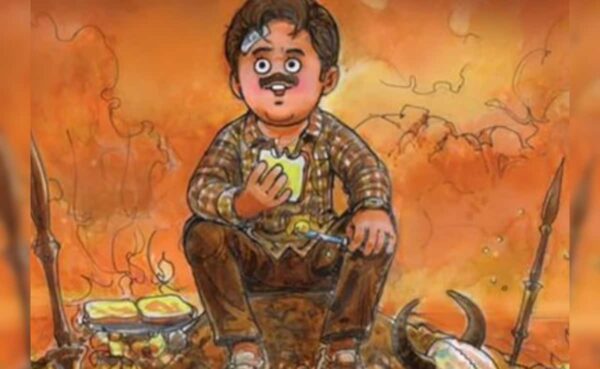Joker: Folie a Deux Review: The Follow-Up Rides On An Inert, Stretched-Out Plotline
5 min read
Joker: Folie a Deux Review: The follow-up lacks the essence and potential of 2019’s Joker, which was a Venice Golden Lion winner and a major worldwide box-office success
Joker: Folie a Deux is what you end up with when a Hollywood studio tries to squeeze out a sequel from a strong and self-contained film endowed with all the qualities of a standalone work – a letdown that is never able to find a way out of the troughs it traverses. The follow-up lacks the essence and potential of 2019’s Joker, which was a Venice Golden Lion winner and a major worldwide box-office success despite mixed reviews. The extension of the Joker origin is driven purely by the hope of raking in more money.
It rides on an inert, stretched-out plotline that, barring Arthur Fleck’s abrupt discovery of love in the unlikeliest of quarters and Lady Gaga’s alluring vocals, which occasionally elevate the film out of the morass of dreariness that it sinks into, has little to offer by way of novelty and genuine magnetism.
Joker: Folie a Deux is technically flawless, visually arresting (returning cinematographer Lawrence Sher is at the top of his game) and musically rich (thanks to composer Hildur Guanodottir, who won the Oscar, BAFTA Award and Golden Globe for best original score for Joker). Yet, director Todd Phillips’ repeat act feels rather ill-advised.
Joker: Folie a Deux is more like a hopeful shot in the dark than a properly thought-out exercise aimed at conducting a further probe into the unstable mind of Arthur and the consequences of his criminal acts.
Joker was powered by a transcendental Joaquin Phoenix performance. He is just as good in the sequel. Getting into the skin of a man constantly teetering on the edge of insanity and going a little easy on the guttural cackle, he lends great dynamism to an Arthur Fleck who is broken in body and spirit, and battling a self that has been split into two conflicting personalities.
Lady Gaga has far less to work with, but with her singing and screen presence she more than makes up for what the character lacks in terms of authentic dramatic force. That apart, the chemistry between her and Phoenix, though never more than functional, has an intriguing, captivating quality.
Joker: Folie a Deux opens with an animated film about Joker and his shadow before a wipe transition delivers the audience in the grey, forbidding interiors of Arkham State Hospital where Arthur Fleck is lodged ahead of the legal action that will deliver the comeuppance that law enforcers believe he deserves.
Written by Scott Silver and Todd Phillips, Joker: Folie a Deux is studded with lively cover versions of an array of famous songs, which pop up at regular intervals and serve as a means of communication between Arthur, who is now a patient in a high-security wing of Arkham prison-hospital.
He awaits trial for the murder of five people, including his idol, late-night talk show host Murray Franklin, who he shot in the head on live television in the previous film. Large parts of the thin story rest squarely on what transpired in the precursor.
Joker: Folie a Deux moves between Arkham, with its inmates and guards, and the courthouse where Arthur stands trial, represented by lawyer Maryanne Stewart (Catherine Keener), somebody he is frequently at loggerheads with.
The newly-elected district attorney Harvey Dent (Harry Lawtey) is determined to send Arthur to the electric chair. He poses questions about what Arthur did two years ago in a decaying, recession-hit Gotham City, where the wealthy and powerful called the shots with little accountability towards the people their greed affected.
The guards at Arkham, led by Jackie Sullivan (Brendon Gleeson), give Arthur a hard time. But the harried man takes the harassment on the chin. Due to heavy, regular medication, he seems to have achieved a degree of normality.
His good behaviour earns Arthur some leeway and he is allowed to join music therapy sessions in another wing that accommodates patients of a less problematic nature.It is there that he spots Lee Quinzel (Lady Gaga), who is obsessed with the Joker and instantly gravitates towards him.
Arthur bonds with Lee over music and their shared mental problems. Love blossoms between two souls looking for solace. Hope and fulfilment beckon even as Arthur’s trial, centred on the defence’s argument that the murders were committed by the Joker, not Arthur Fleck, is about to get underway.
Having found love and a glimmer of acceptance, Arthur goes off his meds, which triggers a gradual return to the fore of the Joker that resides within him. It peeps out often him for the judge to reprimand him. At one point, Arthur is warned that this is not a comedy club and “you are not on the stage”.
That is where Arthur dangles – between the real world that does not care a whit for the likes of him and a fantasy universe that he weaves in the company of Lee. Reality rankles. Arthur and Lee seek escape into an imaginary domain filled with musical routines that gave Lady Gaga, who otherwise plays second fiddle to Phoenix, the space to display her wares to the fullest.
These set pieces, no matter how tagged-on they might appear, give Joker: Folie a Deux rare moments of beauty and strength. The state of Arthur’s fragile psyche is underscored by the performances that his mind rustles up, be they in a club, at a variety show or in the courtroom, which becomes a stage for an angry musical outburst.
These are interesting touches, indicating Arthur’s despairing flights from the wounds and pains of the past into a retreat that holds the promise of harmony and liberation.
But that said, not only is the narrative exasperatingly thin, but character development is nearly non-existent. The musical numbers draw our attention away from the absence of true inspiration in the story and the overall treatment. As long as I have love I can make it, goes one of the songs. As for the film, for all the love and music that it peddles, it does not quite make it.
Such a large number of musical numbers is unusual for a film as dark as Joker: Folie a Deux. But the songs and dances notwithstanding, Phillips clearly does not want the audience to view the film as a musical. That takes quite a bit of the shine away from an exercise that would have done well to play up the style-substance contradictions.
The light within both Arthur and Lee – the latter talks and sings of building “a mountain from a small hill”, and “a heaven from a small hell”, once the two are free – dispels the darkness that envelopes them, but can it be as abiding as they want it to be?
The confusion is never dispelled. Portions of Joker: Folie a Deux are insanely incoherent. If that is meant to convey the convolutions inherent in the workings of two damaged minds, it does not quite work.





